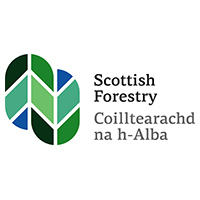What is it?
A native woodland condition indicator has been developed using measures from the that are relevant to every unit area of native woodland, and can indicate ecological health or condition in relation to biodiversity, no matter what the age or type of native woodland.
Woodland - a discrete area of at least 0.5 hectares (ha) with a tree and/or shrub canopy and a minimum width of 20 metres (m), and which is at least 20 m long.
Native woods - woodland where over 50% of the canopy (defined as the upper layers present at any part of the site) is composed of native species.
Nearly-native woods - woodland where between 40% and 50% of the canopy is composed of native species. These woods have the greatest potential to become native woods with appropriate action.
Plantations on Ancient Woodland Sites (PAWS): Ancient woodland where the original semi-natural tree cover on an ancient woodland site had been replaced by planted stands, usually of non-native species.
Explore the data
View the Native woodland Indicators data analysis application
How do I interpret the data?
After testing a variety of measures from pilot study data, four condition attributes were chosen which are critical in influencing biodiversity values and woodland sustainability. These four condition attributes are listed with desired values in brackets:
- canopy cover (50-90%);
- percentage of canopy comprising native species (at least 90%);
- herbivore impact Low or Medium;
- invasive non-native species (not more than 10% cover and fewer than three invasive species present).
The indicator values showed that 46% of all native woodland area was in satisfactory overall health for biodiversity where all condition attributes were in the desired range.
Who is responsible for this indicator?


This indicator is prepared by Forest Research with Scottish Forestry
Adobe Acrobat Reader is the free, trusted leader for reliably viewing, annotating and signing PDFs.
Download Adobe Acrobat Reader




